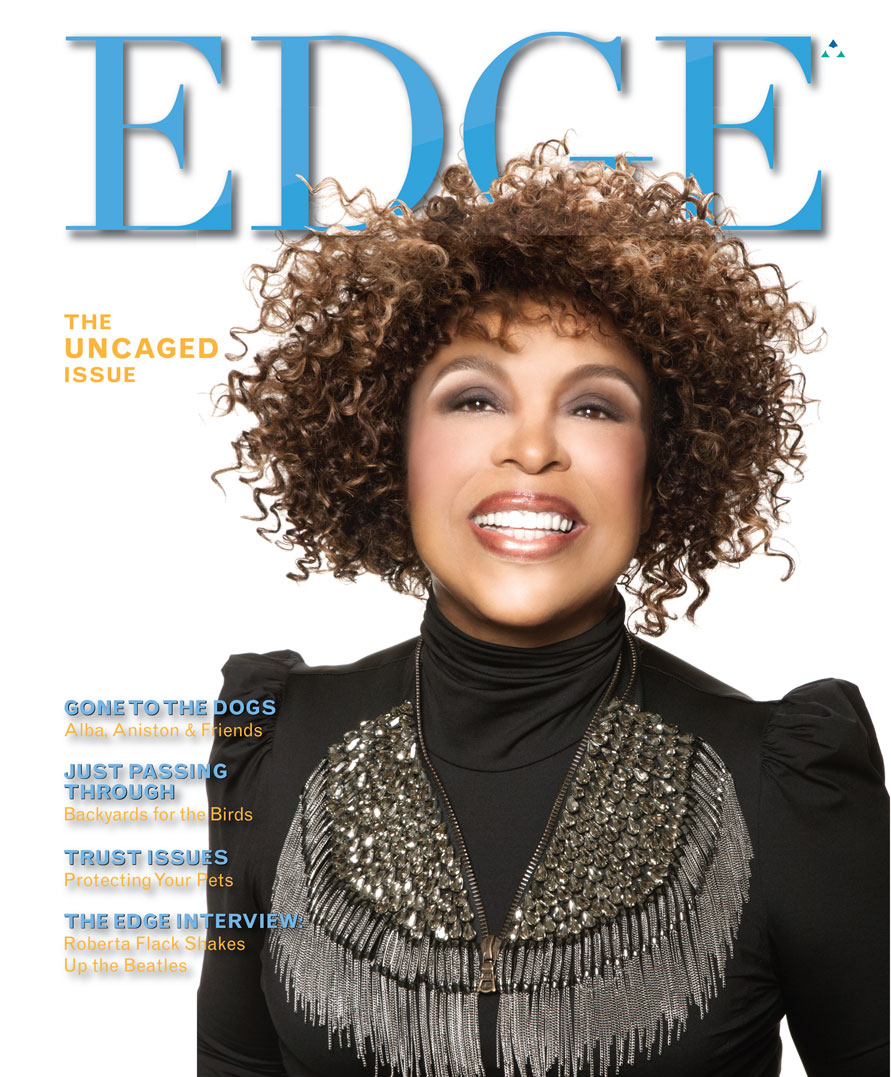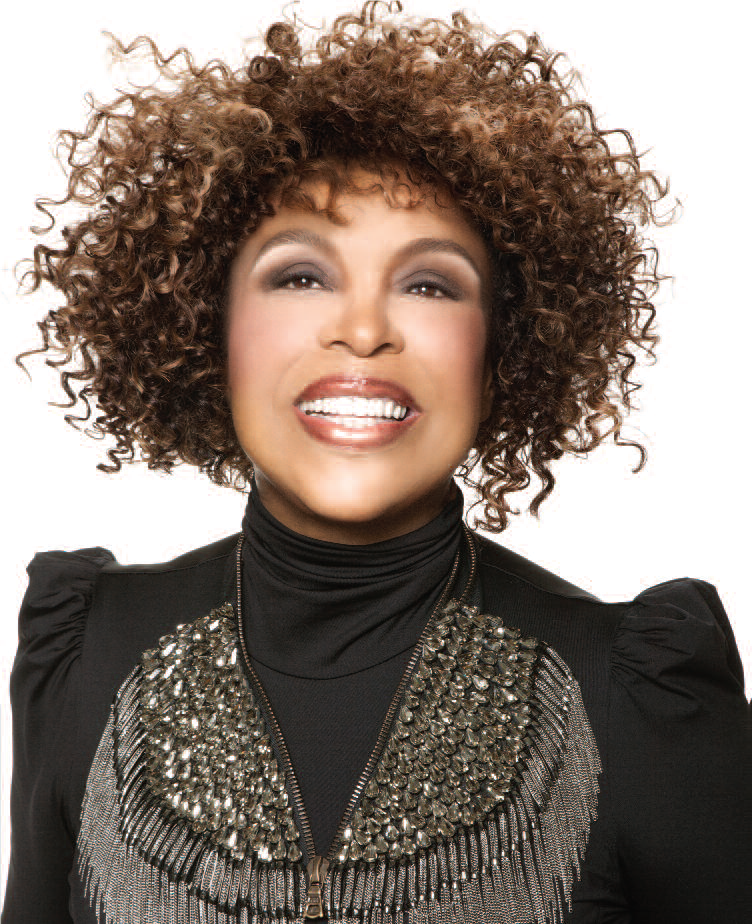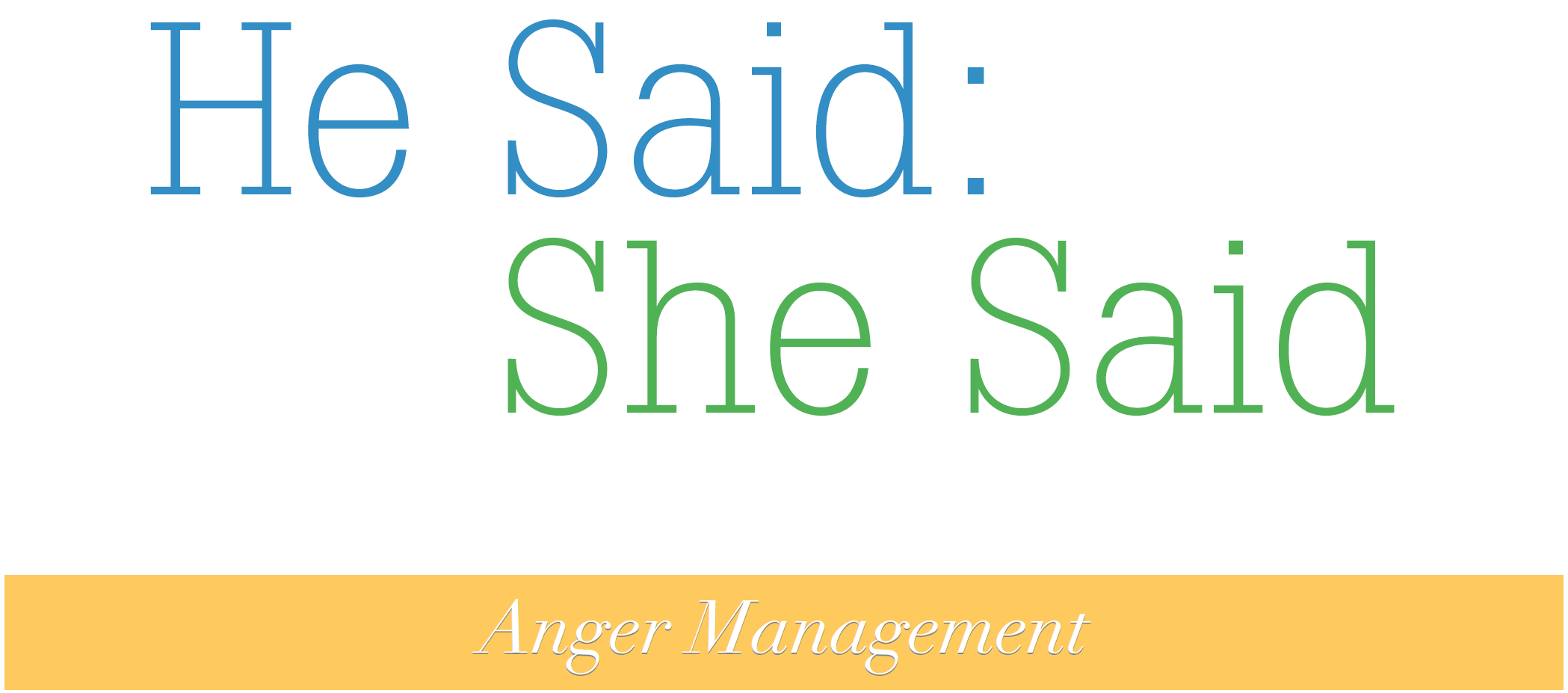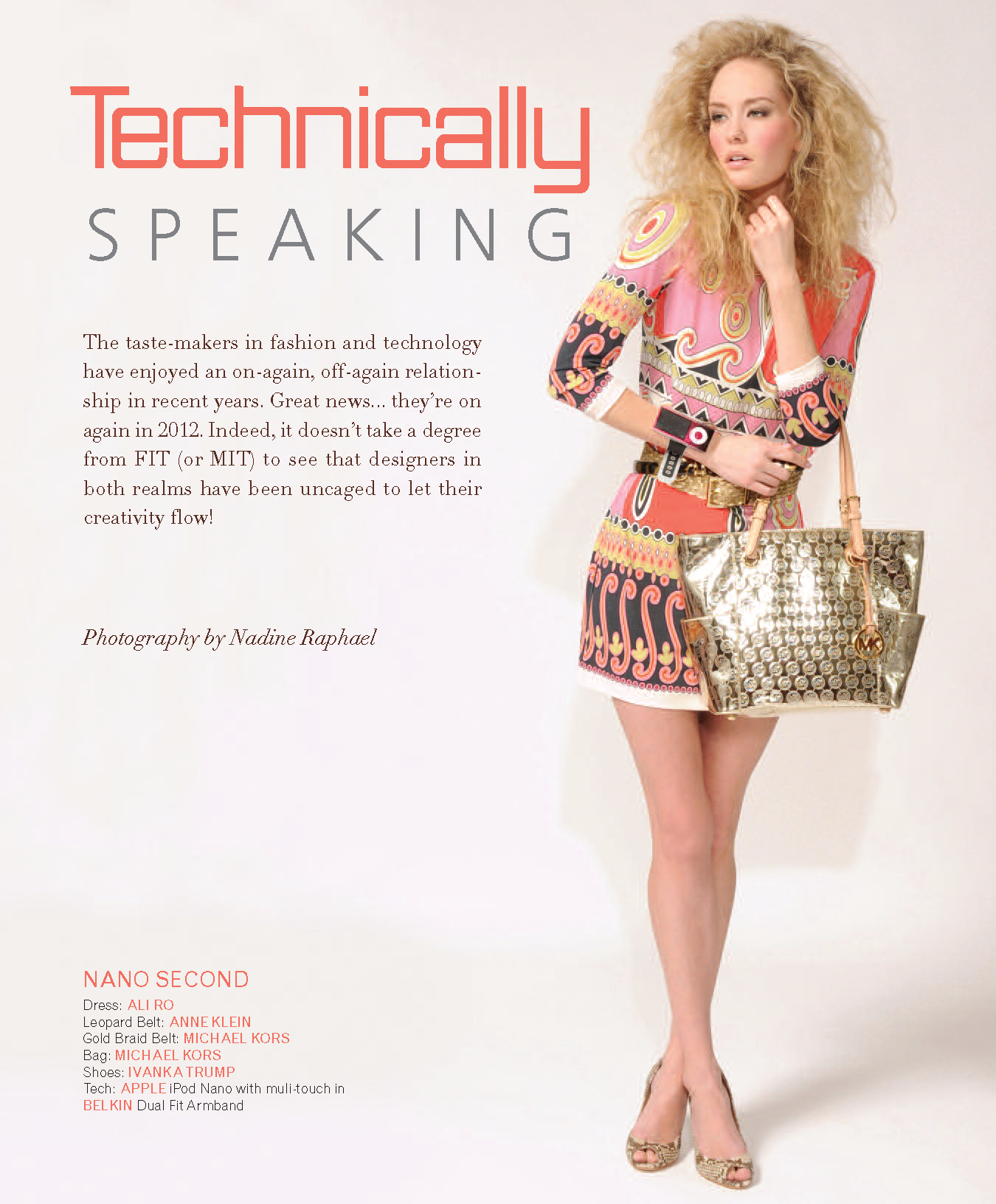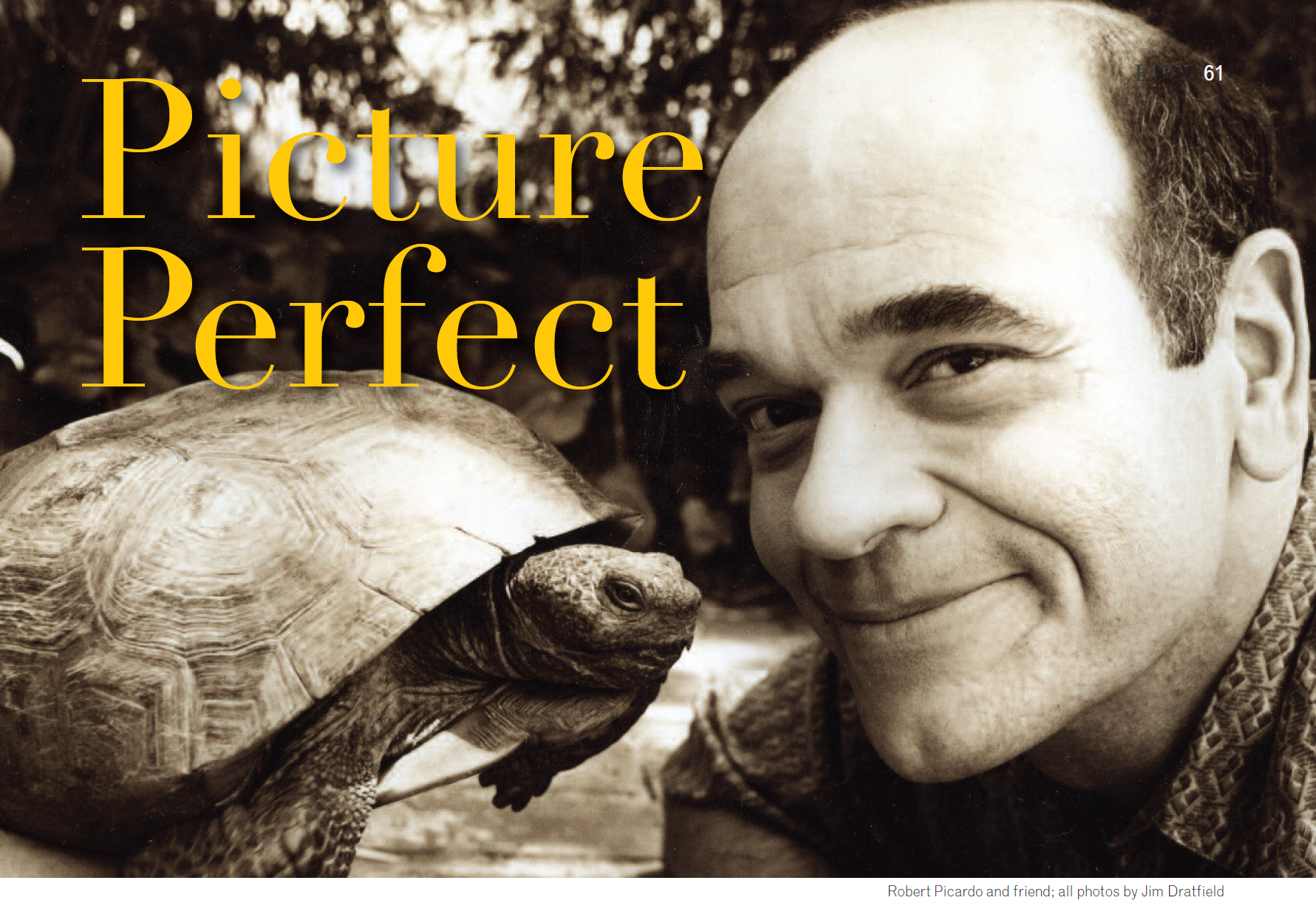On this night, the roasted chicken was infused with tarragon, snuggled under the skin during its time in the high-temperature oven.

Photo credit: iStockphoto/Thinkstock
If there’s a single dish more satisfying than a properly roasted chicken, I’ve not found it. Skin crisped by intense heat and tinged with the taste of an herb, maybe subtle, maybe bold. Breast meat juiced by a little oil, a little butter, and hinting of the same thyme or tarragon that streaks through the skin. Dark meat starting to fall from bones, bones that have shared their soul, deepening and enriching what clings to them. Cavities from which you can pull extremes of flavor, perhaps strands of meat, moist to the point of almost drenched, perhaps a sliver of lemon attached to an out-of-the-way part of the bird. A roasted chicken is a contemplative dish, right for a Sunday when obligations either have been escaped or accomplished and supper can be a quiet affair that starts with all good intentions (a fork) and ends with a bit of rascally table behavior (hands) apropos for the food in front of you. Chicken soup has nothing on roasted chicken for me. I prefer chomping to sipping. Roasted chicken also brings to mind three vivid food memories, one actually experienced, one watched from a distance, one merely read about in a magazine.
The magazine account validated the culinary instincts of then-food writer, now-movie maker Nora Ephron as she traveled with friends in Europe. Passing the entrance to a small restaurant, I think it was in Italy, Ephron had the car stopped, stepped out, took a look and a sniff and said something to the effect of, “I bet they do a good roasted chicken here.” Upon which she and her party decamped and learned that indeed the restaurant did a splendid roasted chicken. The chicken-from-a-distance unfolded in a series, as I gawked again and again almost 20 years ago at the spit-roasted birds twirling about open-air markets throughout Provence. This was well before American supermarkets figured out selling already-roasted chickens would lure customers, and I was drop-jawed with awe at the spectacle. Never bought one in Provence, though, preferring to tinker around with raw ingredients. Stupid of me.
The actual experience came during a birthday trip to San Francisco a couple years ago, when all I wanted to do was lunge at chef Judy Rodgers’s roasted chicken bread salad at her Zuni Café. I did. Make whatever reservations you need – plane, train, blimp – to experience Rodgers’s perfect balance of chicken, bread cubes, greens and juices. Until Zuni, there is Verjus, in Maplewood, where roasted chicken has been on the menu since 2001, when the French restaurant opened for 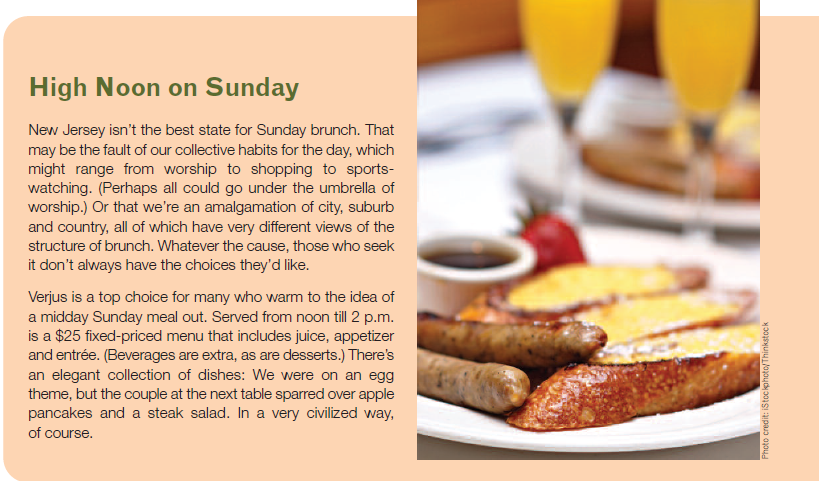 business, and where it might be taken more seriously than at any other restaurant in New Jersey. This is serious praise. The chef-owner Charles Tutino knows his birds. He not only roasts chickens every day Verjus is open, he roasts duck. Both often come in half-bird portions, which may seem an extreme amount of food to anyone who is not an aficionado of expertly roasted birds. The only reason I’ve ever found to stop eating once a roasted chicken (or duck) is set before me is to save something for the next day’s lunch. This requires belief in the benefits and joys of delayed gratification. When the bird is properly roasted, that is not always possible. It was not possible at Verjus. Let’s back up a bit, and give you some background as well as appetizers. Tutino is a classically trained chef who worked at French restaurants in New York before coming to New Jersey and setting up shop with his wife Jane Witkin in an understated space they decorated in a style that would mirror the food. There are cloth-covered tables, dark blond wood chairs, silver and stemmed glasses. There are, perhaps, a couple dozen tables. The scene is hushed, adult. You can converse.
business, and where it might be taken more seriously than at any other restaurant in New Jersey. This is serious praise. The chef-owner Charles Tutino knows his birds. He not only roasts chickens every day Verjus is open, he roasts duck. Both often come in half-bird portions, which may seem an extreme amount of food to anyone who is not an aficionado of expertly roasted birds. The only reason I’ve ever found to stop eating once a roasted chicken (or duck) is set before me is to save something for the next day’s lunch. This requires belief in the benefits and joys of delayed gratification. When the bird is properly roasted, that is not always possible. It was not possible at Verjus. Let’s back up a bit, and give you some background as well as appetizers. Tutino is a classically trained chef who worked at French restaurants in New York before coming to New Jersey and setting up shop with his wife Jane Witkin in an understated space they decorated in a style that would mirror the food. There are cloth-covered tables, dark blond wood chairs, silver and stemmed glasses. There are, perhaps, a couple dozen tables. The scene is hushed, adult. You can converse.
Escargot, to start, are textbook, in the Burgundian manner: white wine, butter, a little garlic, parsley and anise. I adore the braised endive, a pert gratin of elegant spears bathed in lemon and sprinkled with a mix of romano and parmesan cheeses, because the vague bitterness cleanses for something richer. Like the duck liver terrine. Talk about a way with bird dishes: Tutino’s compact layering is cut deftly by his accompaniments—cornichons, cranberry compote, a slash of Dijon mustard. Though I wouldn’t restrict my starter to a mere toss of baby greens, even with Verjus’s signature barely-there vinaigrette, I admire the in-season salads here. Dandelion or morels and mache in the spring, frisée and roasted beets in the fall. Soups, too: Count on spinach in the spring, pumpkin in the fall. But roasted birds, always.
On this night, the roasted chicken was infused with tarragon, snuggled under the skin during its time in the high-temperature oven, and served with carrots glazed by ginger-charged honey and garlicky mashed potatoes. The roasted Pekin duck is positively high-toned, compared to the chicken’s simplicity, skin lacquered but not blackened by silly sweet stuff, as is too much the fashion elsewhere, and plated with black rice and braised red cabbage. There’s a flourish of saucy cranberries, a tart note expertly played. Sure there’s meat and there’s fish (beef Bourguignonne with a soothingly tame mushroom sauce; lightly crusted salmon with lentils), but what you most need to remember is there’s rosé here, from Bandol. A nice Rhone Valley red wine always does right by roasted chicken for me, but there’s something restaurant-special about real-deal pink vino with birds. I wasn’t so impressed with the desserts at Verjus—we tried a serviceable ice cream terrine anchored by fig ice cream and quince sorbet and an apple tarte tatin that, frankly, needed more apples—but I figured anyone who knows chickens as well as Tutino also might know eggs, so I came back for Sunday brunch.
Why not eggs Benedict, poached, set atop English toasts in a pool of Hollandaise? Or an omelette, with poached salmon and a pile of twice-cooked potatoes? There’s even a dessert reward at this time of day and week of very eggy crème brulée, with a suggestion of lavender. As I paid the bill for brunch, I thought about when I could return for another of Verjus’s properly roasted chickens and ducks. I thanked the server and said I’d enjoyed the eggs almost as much as the roasted birds at dinner. A gentleman at the next table leaned over and whispered a tip: “If you like the chicken here,” he said, “you’ll love the chicken salad they do at lunch. With tarragon mayonnaise and a ciabatta roll.” My eyes widened. I’d need to pick up a chicken on the way home. Couldn’t make it through the day without chicken salad.
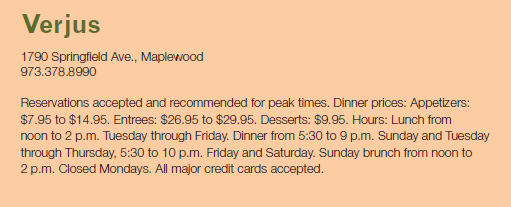
Why Did the Game Bird Cross the Road?

Photo credit: iStockphoto/Thinkstock
The longer I live in New Jersey, the more I am struck that it is a state of contrasts. As I drive by the belching smoke and stench of Linden’s refineries, I can’t help noticing that I am surrounded by license plates trumpeting the fact that I am in The Garden State. Wishful thinking? Not for those who venture beyond the toll roads to discover acre upon acre of corn, tomatoes, eggplant and squash, orchards of apple, pear and peach trees. To be sure, much of New Jersey may not be a fresh produce Eden. Yet to the epicurious, there are wonderful pockets of natural and sustainable farms worth investigating and patronizing. Among the state’s most praiseworthy resources are its naturally raised poultry farms, chief among them the idyllic Griggstown Quail Farm. If the ubiquitous, bland and rubbery-to-the-touch national chicken brands don’t excite you, it’s time to head out to Griggstown. Not only do they raise young succulent chicken and tasty marinated poussin, they also offer seasonal treats: Capons and Red Bourbon and natural turkeys at Thanksgiving and Christmas, pheasants and quail in the fall and winter, not to mention Mallard and Muscovy ducks.
Griggstown’s game birds are so good that at least three times a year, I drive 90 minutes to the Princeton area—a sort of culinary hadj—to stock up on pheasants, butterflied and marinated poussin, quail eggs, chicken pot pies and homemade soups. I know I’m almost there when a runaway pheasant skitters across Bunker Hill Road like a Park Avenue matron in spiked heels tearing toward a pre-sale at Bergdorf’s. Sometimes these free-range birds fly the coop and make a fast getaway, relocating into suburbia. However, it’s a sad, but delicious, fact that the majority of unlucky quail, poussin and pheasants—raised in acres of fenced-in, open-air habitats—are headed to Zagat-rated restaurants, gourmet butchers and trendy dinner parties, pleasing foodie palates around the Tri-state and beyond.
The story behind their unlucky fate stretches back over 40 years. It’s an inspiring tale plucked from entrepreneurs’ annals of vision and success. It started with a teenage lawn boy with a dream named George Rude and the farm owner, Peter Josten, who also happened to be in the restaurant business. On returning from Vietnam a few years later, Rude, then in his twenties and a game hunter since childhood, approached Josten with the idea to raise game birds as a business. Josten supplied two acres, his contacts with high-end New York restaurants and, voila, Griggstown Quail Farm was born. Today, the farm has grown to 70 acres and Rude has not rested a day since raising his first quail. His business has grown selling his produce—poussin, chicken, quail, pheasant, turkey and capons—both retail and directly to customers at farm markets. In 2002, he built a small market on the farm and in 2004 hired Matt Systema, a young chef, who trained at the Culinary Institute of America, Café Boulud in New York and the Ryland Inn in New Jersey. Chef Matt creates a range of prepared products including chicken salads, a variety of chicken sausages, turkey burgers, turkey and chicken potpies, quiches, fruit pies and homemade soups.
In addition, farm-laid chicken and quail eggs are also sold. Stay tuned, as they are building a 4,000-square-foot kitchen with bigger plans for the farm vegetable produce and someday perhaps an eat-in area. A separate off-shoot company (Rudy’s, which is owned by Rude’s brother Peter), delivers game birds nightly to gourmet restaurants that stress high quality and locavore trends. Griggstown chicken, quail and pheasants have been sighted on menus of New Jersey dining spots ranging from Eno Terra in Princeton, Nicolas in Red Bank, and Hamilton Grill Room in New Hope to The Blue Bottle Cafe in Hopewell and the Bernardsville Inn. In a rush? Today you also can find some Griggstown products such as chicken sausages, chicken pot-pies at farmers’ markets as well as at your local fine-food purveyor. Bob Sickles of Sickles Market in Little Silver has carried Griggstown products for five years. “You can’t beat the quality of their pot pies,” he says. Sickles also orders from Griggstown his family’s Thanksgiving Red Bourbon turkey, which can be purchased “oven-ready” and is a revelation in juiciness.
If you are one of the many daunted by the mere thought of cooking game birds, some—like the marinated poussin—come in air-tight bags with cooking instructions so easy that my husband, a self-professed grill-o-phobe, barbequed them with confidence and great results. (I did take five minutes off the cooking time because our grill’s heat is more intense than the norm.) Even our dinner guest, a hunter and picky gourmet famed for returning nearly every meat entrée he orders at restaurants to the kitchen, was pleased and impressed. The cook felt like crowing!
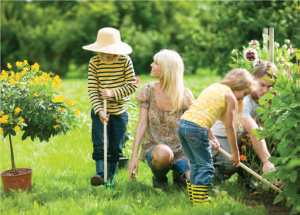
Photo credit: iStockphoto/Thinkstock
That suburban sea of emerald lawn may make your neighbors green with envy. But birds will give your yard the cold shoulder.
-
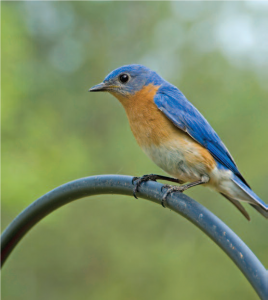
Photo credit: iStockphoto/Thinkstock
Birds will do more than fill your yard with their songs. Their skills at hunting less-desirable insects and cross-pollinating plants make them the kind of neighbors you really want. Given that New Jersey is a stopping-off point for dozens of migrating species—not to mention our year-round feathered friends—transforming your backyard into an avian Welcome mat is well worth the trouble. Open lawns are rather barren and sterile for wildlife. So says Scott Barnes, the Programs Director for the Central Region of New Jersey Audubon. “The more trees, shrubs, and perennials you can plant in their place, the more likely you are to attract birds.” According to the experts, attracting your favorite songbirds requires little more than some patience and planning.
- Plant the right things. If you want to attract birds, you need to cut into that swath of green lawn—most bird experts recommend transforming at least 25 percent of your grass coverage into lush gardens to attract birds. The key, according to landscape designer Jose German, is to appeal to a bird’s palate. “Planting bushes and trees that produce berries is the first step, especially if you want to feed them naturally,” he says. “That’s the easiest way to provide the foliage, nectar, pollen, berries, seeds and nuts that many species of wildlife require to survive.” He recommends shrubs and bushes such as serviceberry, elderberry, winterberry, viburnum, blueberries and raspberries, to provide plenty of food and a place to perch. Flowers and plants also attract birds, but the key to appealing to the local bird population is selecting plants that are native to New Jersey. Consult the experts at your local garden center if you want to ensure that the plants you choose are common to your area. “The key element for anyone trying to increase and benefit birds in their yard is planting native vegetation,” Barnes says. “Native plants with flowers or berries provide important food for many species of wildlife, including birds.”
- Provide water. “Water features are magnets for wildlife,” says Barnes. Birds need fresh, clean water for drinking and bathing—whether you go with a simple birdbath or a more elaborate pond or other water feature. You should change the water in your birdbath every two to four days—or as needed to keep the water replenished and fresh. Keep in mind that smaller water features will be more likely to attract the smaller birds, and a more elaborate pond with waterfalls and multiple pools will be more likely to attract a wider variety of birds.
- Give them shelter. Birds need a place to call home— and it doesn’t necessarily have to be a prefab birdhouse from the local home improvement store. “Wildlife require places to hide in order to feel safe from people, predators and inclement weather,” German says. “You can convert your yard into a heaven for birds if plant bushes and shrubs that will feed and protect them from predators.” If you do want to invest in a birdhouse, choose one that suits the kind of bird you’d like to attract. There’s a big difference between what the robins want (a simple, covered shelf where they can build a mud nest) and purple martins (a grander, multi-roomed shelter).
- Share a snack. While many birds can thrive on insects and fruit, others are looking for a different kind of feast— and an appropriate feeder can help you attract the birds you want, and avoid the pesky squirrels you don’t. “Selecting the right seed and the right feeder is important,” says German. “For example, nyger seed is high in calories and oil content seed, loved by finches and other wild birds. It is really small, so squirrels and big birds are not attracted to it.” The Audubon Society recommends using a variety of targeted feeders and feed mixes—such as a special hummingbird feeder stocked with one part sugar to three parts water—to attract the greatest variety of birds to your door.
- Keep it au naturel. While chemical fertilizers and weed killers may make your lawn look golf-course perfect, they can damage the environment and the birds that live there. But fortunately, there are techniques for keeping your lawn lush without harming the environment. “You can have a beautiful lawn without all of the chemicals,” German says. Step one is having your soil tested to determine its composition, so you can develop a specific plan of action to amend the soil for a healthier lawn. Aeration is also key, especially if your lawn is heavily traf

Photo credit: iStockphoto/Thinkstock
ficked. “Organic fertilizers are highly recommended at the beginning and the end of the landscaping season—it should be rich in organic material, like compost or compost tea,” German recommends. And to help control weeds, German suggests overseeding the lawn. “A thicker lawn reduces the opportunities for the weeds to grow.”
- Go a little wild. Letting parts of your backyard become a bit overgrown and not-so-manicured—including allowing a few weeds into the mix—can help support a larger and more varied bird population. Long native grasses offer seeds and shelter for various birds, and other weeds can attract certain species. “A weedy garden with plant stalks and seed heads to search for insects in will help attract hummingbirds,” Barnes says. Leaving some dead leaves and twigs can help foster nest building for birds—or provide homes for insects. “A decayed trunk is good because it will host caterpillars and insects,” German says. Consider it a smorgasbord for your favorite feathered friends.

Photo credit: iStockphoto/Thinkstock
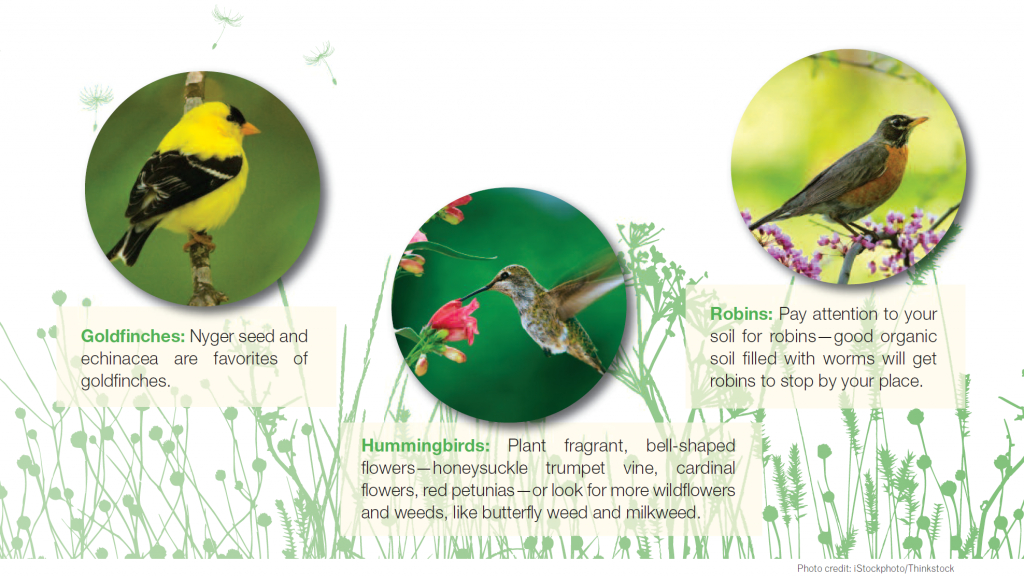
Photo credit: iStockphoto/Thinkstock

Photo credit: iStockphoto/Thinkstock
RARE BIRDS Beyond creating a safe and inviting habitat for birds, perhaps the biggest reward for the backyard birder is spotting a rare or exotic species from the back porch or kitchen window. Some are year-’round residents of the Garden State, but many more are merely visiting on their way north or south. It is an absolute certainty that, at some point, you will spot species you’ve never seen before and want to know more about them. So expect to familiarize yourself with the local Audubon web site, and buy a couple of field guides. Your largest additional investment is likely to be a new pair of binoculars. A lot of “backyard birders” keep them hanging by the kitchen sink or living room picture window. In recent years, optical companies have produced an overwhelming number of binoculars aimed at the bird watching market. Once you’ve completed your backyard project, it’s time to go shopping for a new pair. What are the rules for sorting through so many choices? Stick to these pointers for your first pair and you should be in good shape:
- Pick a magnification. Unless you have a multi-acre property, 7X should do just fine.
- Read online reviews. Pay particular attention to comments about the quality, brightness and sharpness of each model. This is what you’re paying for, right?
- Do you wear glasses? If so, some designs are friendlier than others. Rubber eyecups typically don’t work as well as turn-and-lock eyecups. Glasses-wearers also tend to find compact models problematic.
- Pick a price point that suits your family budget. If you need a new refrigerator, don’t spend $1,200 on binoculars. Price is determined largely be quality. The “mid price” for good binocs is around $300. If you want to test the waters with a cheaper pair, that’s okay—there are some decent ones available on sale for $50 to $100. Just know that you may be making another investment in a year or two. In terms of brands, you can’t go wrong with Bushnell or Nikon—and at the higher end of the spectrum Zeiss, Leica and Swarovski—but do 10 minutes of research before pushing the BUY button.
Better yet, instead of buying online, find a store that carries the models you’ve pinpointed as possibilities and try them in person. There is no right and wrong way to hold binoculars—everyone handles them differently. Feel the shape and weight in your hands, sense how they fit your face, and trust your instincts. This is especially true if you wear glasses.
Genius loves company. That may be the simplest way to account for one of 2012’s most ambitious and successful album releases, Let It Be—a reinterpretation of Beatles classics by Roberta Flack. For someone whose musicianship covers every genre from Classical to R&B to Jazz, however, nothing is simple about the 12 songs that made the final cut. Each one is like taking hold of Flack’s hand and finding a new walkway through lyrics and melodies that are as familiar to most of us as breathing. As Tetiana Anderson discovered, for the fourtime Grammy winner it’s all about the journey. Indeed, from Flack’s early years as a music prodigy through the twists and turns of a fascinating and celebrated career, she has become quite adept at discovering the path less taken. And, the title of her new album notwithstanding, Roberta Flack has never been one to simply let it be.
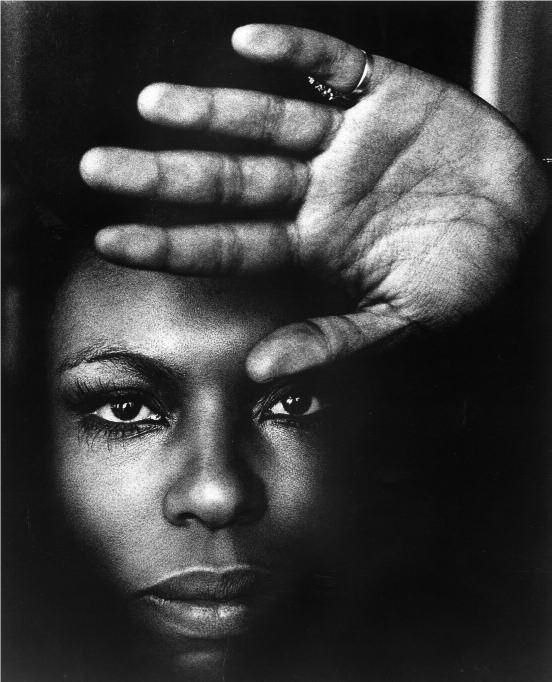
Photo courtesy of Roberta Flack
EDGE: You really want people to make connections through your songs. Where did that come from?
RF: I don’t know where that came from. But I can tell you that connecting through songs is what I am all about, period. I was watching recently some footage of Bill Cosby introducing me at a jazz fest back in the ’70s. He was telling the audience that Roberta Flack tells stories so you can understand them. I think that is a true description of how I feel about music. It speaks to me. I try to speak back and once I get the conversation going—and figure out what the whole point is—I’m ready to dig in and come up with a very individual interpretation of a particular song.
EDGE: Your own story is incredible. You were the youngest person to ever enroll at Howard University, and later the first black teacher at an all-white school. Do you think of yourself as someone who breaks barriers?
RF: No. But I do believe in destiny and fate. If you are practicing five or six hours every day—and that’s all you live for as a child because there are no other options—if you are able to grasp that and hold onto it, it will tell you where you are supposed to go. I did go to Howard early. And I did become the first black teacher at an all-white school in Chevy Chase, Maryland, which was a little tighter wound in terms of the people and their personalities than Virginia. When you’re a child and you have the gift of music, the gift of art, the gift of conversation, nothing stops you.
EDGE: What impact did the church and gospel have on your appreciation for music?
RF: I belonged to an interesting church and my mom was the church organist. The choir director was a Howard University graduate, and many of the choir members were people who had graduated Howard or gone to school with him. That church, as we would say as young kids, was “uppity.” It was uppity because the church that Mahalia Jackson, Sam Cooke, the Soul Stirrers and the Five Blind Boys visited was not our church. That was Macedonia Baptist, down the street. I spent a lot of time as a young person going between churches. Actually, the first genre of music I was exposed to was not gospel music; my background was actually classical. But I loved gospel. What is there not to love? It doesn’t have to be something where people are shouting. It can be a song’s subtle embellishment, it can be the malisma that Whitney Houston brought to her pop music. Melisma is a gospel characteristic when you take a note that’s supposed to be da and go dahahahahahaha and add all those other notes up and down the scale. That is a beautiful experience and it’s also very moving. Your soul cannot help but be stirred when you hear Aretha Franklin sing “God Bless the Child” or “Amazing Grace.”
EDGE: Do the classical works of Chopin and Bach give you the same goose bumps as gospel?
RF: Yes. Yes. I can play some Chopin for you that would make you say Girl, that ain’t Chopin! I’ll tell you who uses the melodic flow of romantic composers like Schuman, Brahms, Chopin, Shubert and Beethoven: Stevie Wonder. When you hear him sing, when you hear him play any of those songs that are so melodic, like [singing] A Ribbon in the Sky for our love…he does a lot of that.
EDGE: You worked on songs with Stevie Wonder but are perhaps best known for your partnerships with Donny Hathaway and Eugene McDaniels. What did you learn about the craft from those two?
RF: I was humbled by their talent. I’ve been watching a performance Gene and I did in the studio of a song that Gene wrote for an Eastern Airlines commercial. It was called “Chasing the Sunshine.” How clever is that as a title? This is the same guy who wrote “Reverend Lee,” “Feel Like Making Love” and “Compared to You.” He was a profound writer, Gene McDaniels. Absolutely, absolutely brilliant. Donny and I cut “You’ve Got a Friend” in 20 minutes, which isn’t hard to understand. I am a musician, not just a singer, so you don’t have to teach me something. I have the presence of mind and the ambition and the appreciation for my craft to sit down and practice. So I practiced, came to New York, and Donny and I did “You’ve Got a Friend,” which went to the top of the charts. So they said Let’s do an album. Okay, so the next thing we did was “Where Is the Love.” Donny and I finished that first album in three days! I should say that I did whatever Donny asked me to do as a duet partner. In terms of putting it together, sketching it out, bringing all the pieces together so that everybody understood what was happening—that was Donny, that was the kind of mind he had. Three days.
EDGE: You accompanied Donny on piano on the classic “For All We Know.”
RF: Yes. When we finished that album the producer asked, “Ro, you got another song?” I said, “Donny do you know this song?” He said, “Yeah I know the song but I don’t know the words.” So I wrote down the lyrics of “For All We Know.” I played it and he sang it and we recorded it. You know, I had really cut my chops as an accompanist. I’d played piano while I was teaching school in DC at the Tivoli Opera Restaurant. I mean we were doing Aida and Madame Butterfuly, we were doing Tosca and La Traviata and Verde and Chelini. Oh, it was just so wonderful. Here I am this little girl from Black Mountain, North Carolina. I’d never read that stuff but my musicianship, my gift—thank you, God—allowed me to do it with the same kind of comfort that I’m playing for Donny. I just looked at him and listened to the way the song was developing. When we did that together it was one of the highlights of my recording career.
EDGE: You also worked with Bob Marley. How did you meet? What was he like?
RF: Beautiful. Fine. Sexy. He was a friend. We were both Aquarians. I am on the 10th and he’s on the 6th. When he got sick I was so upset. I lived for seven years in Jamaica accidentally. That was part of that Eastern Airlines – Gene McDaniels thing. Part of my payoff from the airline was to close my eyes, pick from their map any place, and my finger landed on Montego Bay. I stayed for about two days and said, Now I want to go to Kingston. I was with a couple of guys. We went to Kingston and ran right smack into some Rastas who said, “Sistren let me take you, let we go see brother Bob.” So he and I became friends and as a matter of fact I brought down later my band and we went into his studio and worked on “Killing Me Softly.” Then I came back to the States and recorded it, and of course that was a hit for me, too. But Bob was a wonderful friend. He spent several hours in my apartment in New York sharing musical ideas and good vibrations and was just a beautiful person. When he was sick I tried to find some holistic doctors for him to see. I was able to introduce him to a few, but it was a little bit past the time where they could help.
EDGE: You’ve seen more than one great talent leave this earth before their time, whether its Bob Marley or Whitney Houston. That’s got to be tough for you.
RF: It is tough. I think about it especially since Whitney died. I think about it a lot. A couple of days ago I found myself rattling off names of people that I have known and worked with, or knew musically in a very special, intimate way, who are gone. I said, Okay I gotta stop this. You start to feel your own vulnerability.
EDGE: You mentioned “Killing Me Softly,” which went to number one. What do you recall about that?
RF: When “Killing Me Softly” was released as a single I was performing in Germany. My one source of Englishlanguage entertainment was the army base radio station. I had it on and woke up to Well, here it is again, Roberta Flack’s next big single, Killing Me Softly! I remember thinking Oh, boy! But at the end they finished by repeating “…killing me softly with his song” over and over and then fading out. I said “No, that’s not it!” I called the producer and asked, “What did you do?” He said, “Oh I just faded it.” I said, “No! No! No!” He said, “Man, only like a million three hundred fifty thousand of these have been sent out all around the world. Can’t you live with that?” I said, “No.” So they changed it.
EDGE: Let’s fast-forward to your new album. One of the interesting things about the Beatles is that they evolved so rapidly and had such a huge effect on popular music. When you went back and sorted through their catalogue of songs what are the things that made you go Wow?

Atlantic Recording Co./David Redfern
RF: When I was looking at “I’m Looking Through You,” which is the first song we laid down, there is the line Love has a nasty habit of disappearing overnight. Disappearing overnight. Every time I sing that it makes me almost want to cry, because love does have a nasty habit of vamoosing overnight. You can be ever so intense and sincere and real, then all of the sudden it’s like Who is this person? What am I into? I’m married to who? What and why did I do this? Because the love you thought you identified as love was something else, and wasn’t based on something that could stand all the pressures of being, of becoming, Roberta Flack. I was married to a wonderful bass player who worked with Roland Kirk, the great jazz horn player. Roland thought I was a great musician and he’d say, “Ro, come on, you need to play some jazz girl. Come on.” My husband said to me one day, “You can’t do this, because if you do, you’ll change.” I asked him, “How will I change?” He said, “I don’t know, but women always change.”I told him I wasn’t going to change, that I’d been playing the piano and singing and helping other people play and sing all my life—so this is just another format, another audience. I’m doing it. I want to do it. He said, “If you do, we can’t stay together.” I said, “Okay. Bye. See you later.”
EDGE: You chose your music.
RF: Of course! How could I not? I had no choice. I wasn’t selling my body. I wasn’t prostituting. I wasn’t doing anything except making music, which I had been doing all my life!
EDGE: So back to the Beatles, is what grips you their lyrics?
RF: No, it’s everything.
EDGE: How did you decide which songs to include and which to cut?
RF: It wasn’t easy. I listened to myself and I listened to my heart mostly. I think if you’re a trained musician like I am, or like Alicia Keyes or Stevie Wonder or Donny Hathaway, it helps. You have the ability to see how a song is built from the bottom up. And after you see the song and you fall in love with the song, then you get inside of it and break it down again. It’s an incredible process.
EDGE: Still, the process took five years.
RF: Yes, well the longer I worked on the songs the simpler they became, and the easier it became for me to hear them in their finality. Even though I hadn’t finished them, I could still hear what was going to be the final song. I could hear my voice singing the lyrics and singing the melody and putting it all together, and the accompaniment underneath. I wanted mostly guitars, because I think of the Beatles as guitarists. There were three major players in their band—John, George and Paul—so I wanted it to have that sound.
EDGE: Do you think songwriting and popular music has changed dramatically since the Beatles were around?
RF: It has to. Can you imaging doing the Hand Jive? Can you imagine doing the Charleston? Can you imagine every song sounding like something Billie Holliday had to sing? Weren’t we glad when Esther Phillips came out and sang “What a Difference a Day Makes?” The world must evolve and everything must change, especially music. If it doesn’t, where do we go? I can’t imagine doing all of the Beatles songs the way they did them.
EDGE: I have to ask—you crossed paths fairly often with John Lennon when both of you had apartments in the same building on Central Park West. Were you buddies?
RF: He invited me to the studio, and I did work with him a couple of times on stage and stuff like that, but it was never like buddy-buddy. It wasn’t buddies, no.
EDGE: So what’s next for Roberta Flack?
RF: I really wish I knew what was next. I have an album of songs I’ve done with a group of young people. We all call ourselves the Real Artist Symposium—symposium meaning a group of very musical people. We’ve come up with an album we want to release under the title: Real Artist Symposium featuring Roberta Flack. Not because I want to be featured, but because using my being a member of the group will attract interest and people won’t have to look at something and say What’s RAS? Maybe they’ll be curious enough to check out the music of these other young artists who are with me. I’ve done some of the music already and I am excited about it.
Editor’s Note: If Tetiana Anderson’s name is familiar, it’s probably because her face and voice are, too. A television reporter who has chased storms for the Weather Channel and covered Operation Iraqi Freedom from Baghdad for MSNBC, Anderson is currently a freelance reporter/ producer for organizations including NY-1, CBS Newspath and CNN. Needless to say, she knows her way around an interview.
The only people crazier than celebrity-obsessed fans are the dog-obsessed fans of celebrities. They drive countless web sites and have created a new breed of photographer: The Pup-arazzi. We kid you not. EDGE invites you on a walkie with some of the world’s most celebrated dog owners…and unleashes its picks for history’s greatest canine celebrities.
Five Fascinating Celebrity Dog Owners
Jessica Alba
Breed: Pug
Names: Sid and Nancy
Fun Fact: Owns a third dog named Bowie
Peter Dinklage
Breed: Undetermined
Name: Kevin
Fun Fact: Point Pleasant native gave a shout out to his dog-sitter during Golden Globes acceptance speech…but forgot to thank his manager
Angelina Jolie
Breed: Bulldog
Name: Jacques
Fun Fact: Resisted overwhelming temptation to get a Pitt Bull
Barack Obama
Breed: Portuguese Water Dog
Name: Bo
Fun Fact: Malia’s allergies dictated a hypoallergenic breed
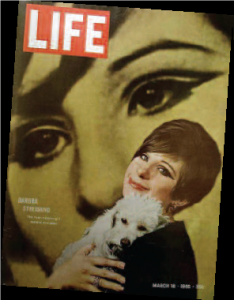
Photos: Timmy & Lassie autograph courtesy of Upper Case Editorial Services; Barbra Streisand copyright 1966 Time Inc.
Barbra Streisand
Breed: Coton de Tuléar
Name: Sammie
Fun Fact: Streisand and her dog Sadie graced the cover of LIFE in 1966
Honorable Mention
Ellen Barkin
Breed: Who cares? Could there possibly be a better celebrity dog-owner name!
Burning Question What about Bob Barker?
Top 5 Celebrity Dogs
Toto
Breed: Cairn Terrier
Claim to Fame: Appeared in The Wizard of Oz and 11 more films
Did You Know? Made more per week than the highest paid Munchkin
Rin Tin Tin
Breed: German Shepherd
Claim to Fame: Made 25 movies and had his own radio show
Did You Know? Rinty scored a star on Hollywood’s Walk of Fame
Balto
Breed: Siberian Husky
Claim to Fame: Annual Iditarod traces the path of the 1925 journey that saved Nome from a diphtheria outbreak
Did You Know? Has a statue in NY’s Central Park, near East 69th street
Lassie
Breed: Collie
Claim to Fame: Lassie TV series ran for 20 seasons
Did You Know? First dog to play Lassie was named Pal
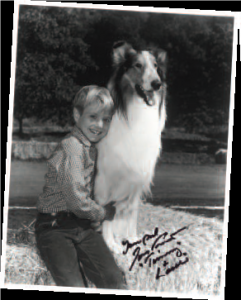
Photos: Timmy & Lassie autograph courtesy of Upper Case Editorial Services; Barbra Streisand copyright 1966 Time Inc.
Eddie
Breed: Jack Russell Terrier
Claim to Fame: Offended Frasier Crane in every imaginable way
Did You Know? During the show’s 11-year run, Eddie was played by Moose and his son, Enzo
Enters a New Dimension

Labib E. Riachi, MD, Interim Chairman of OB/GYN at Trinitas, has the distinction of being one of the busiest robotic surgeons in the Northeast United States. He has completed over 250 robotic cases during the last two years.
Doctors ‘Doubling Up’ with the da Vinci System Two heads are better than one. That old saying holds especially true when the topic is robotic surgery. The da Vinci Surgical System, which enables doctors to sit comfortably at a console and operate remotely with incredible dexterity and precision—and a super-magnified 3-D view—has proved invaluable for a wide range of minimally invasive procedures since arriving at Trinitas Regional Medical Center in 2009. Indeed, during that time, Trinitas has become the busiest hospital on the East Coast for gynecological surgeries using the da Vinci, not to mention the first place in New Jersey where robotic bariatric surgery was ever performed. Beyond the headline-generating benefits of da Vinci, however, is the growing realization that the system‘s dualconsole set-up creates a stunning array of new possibilities both for doctors and patients.
For example, if a complication arises during an operation, a second surgeon can literally “sit in” and assist in his or her specialty without missing a beat. “We also have realized that the two consoles enable us to schedule ‘hybrid’ procedures, where two surgeons work together at once,” says Dr. Labib Riachi, Interim Chairman of the OB/GYN Department at Trinitas. “With a single console, one surgeon would have to step away to allow another surgeon to step in. With two this is not an issue. The benefit to the patient is immeasurable.” Another advantage of having two consoles is in training doctors in robotic applications. “While one surgeon performs a procedure,” Dr. Riachi explains, “the other can appreciate both visually and manually what we are doing. There is also amazing simulator software that enables trainees to teach themselves on a ‘virtual’ patient.”
All of this happens, he adds, in three dimensions—with 10X magnification and 360-degree rotation. This enables doctors to identify structures (such as small blood vessels and nerves) they couldn’t fully appreciate with traditional laparoscopic methods, and also perform suturing more efficiently. According to OB/GYN physician Dr. David Herzog, who uses the system for a number of procedures, including hysterectomies, the da Vinci has truly revolutionized surgery. The movements of the robotic instruments perfectly mimic the surgeon’s hand movements, allowing doctors to cut, cauterize and sew with the same freedom as if the patient were wide open. “The robot has allowed us to perform complex surgeries through tiny incisions which, in the past, would have necessitated large, painful incisions,” Dr. Herzog explains. “These tiny incisions make the recovery process quick and comfortable. So in the case of a hysterectomy, this enables my patients to return to work usually within one week, as opposed to eight weeks after the classic incision procedure.” The technology is constantly improving, he adds. “And that translates into excitement for the doctors and great care for the patients.”
Trinitas psychologists Dr. Patricia Neary-Ludmer and Dr. Rodger Goddard get to the bottom of getting steamed.
Goddard: Anger is a serious issue. Stories of road rage, shootings, domestic violence, workplace assault and bullying fill our airwaves. Movies and television shows are populated with dangerous, angry, vengeful, criminal characters. Anger, aggression and violence are ever-present in our lives. Anger fuels violent crimes, rapes, murder and war. The model of dealing with threat that we see in the media is one of threatening back, upping the ante and retaliation. We often ascribe to the Clint Eastwood, Dirty Harry Go ahead make my day school of conflict resolution.
Neary-Ludmer: We become angry when we—or someone we care about—is threatened, or when another person has wronged us or those we care about. Anger also can be the result of frustration when our needs, desires, goals are not being met, or when we feel a lack of control.
Goddard: We may experience anger in dealing with our husbands, wives, boyfriends, girlfriends, sons, daughters, mothers, fathers and work relationships. We experience anger in our bodies, thoughts, urges, heart and soul. Anger can express itself on a continuum of intensity ranging from annoyance, tension, dislike, frustration and resentment, to fury, rage, aggression and violence. Anger makes us do and say horrible things. Anger makes the heart pound and thoughts race. Anger infiltrates our daily lives in the form of stress, frustration, dissatisfaction, anxiety, argument, discomfort, illness and relationship problems. Anger is unhealthy. It takes a toll on the quality and quantity of our lives. Living with chronic states of anger injures our immune system and contributes to heart disease, stroke, ulcer, stomach problems, headaches and countless other illnesses. We hold anger in our bodies. It leads to subtle and sometimes intense muscle tightening that we may have for days, weeks or years. Many of us have favorite body areas for holding our anger. We may constrict the muscles of our lower back, forehead, neck, jaw, face or stomach. We can begin to reverse the negative effects of anger by first learning how to tell how tense our muscles are, and secondly, by learning how to release our muscles tension.
Neary-Ludmer: One of the ideas I try to convey to the people I see with anger issues is that anger does far more damage to them than to others. I try to explain that it’s okay to forgive—it doesn’t mean you have to forget. Just breath in, breathe out, and move on. Often I will use quotes to help people understand their anger. There are three in particular that are really effective. Buddha said that holding onto anger is like “grasping a hot coal with the intent of throwing it at someone else—you are the one who gets burned.” Gandhi observed that “an eye for an eye makes the whole world go blind.” And Ralph Waldo Emerson pointed out that for every minute you remain angry, “you give up 60 seconds of peace of mind.”
Goddard: Anger and frustration often come from not being in control—not getting something we want or not getting our way with others. Regaining control in our lives is an important key to overcoming chronic anger. Many people do not understand the difference between anger and aggression. Anger is an emotion. Emotions and anger are actually good. Emotions are a sixth sense. They tell us very important things about ourselves and others— what we want and what we need. Emotions, however, can be used, experienced or expressed in positive or negative/constructive or destructive ways. Aggression, on the other hand, is a negative action that is harmful, destructive, threatening and/or violates the rights of another. Anger can give us important messages and can be positive fuel which can provide us with the motivation and energy to make needed changes.
Neary-Ludmer: There are some basic steps involved in getting anger under control. First, a person with anger problems has to admit he/she has a problem. This is a fundamental step in addressing virtually all self-destructive behavioral issues. Next, a person needs to learn relaxation techniques that target the emotional and psychological components of anger; feelings of anger protect us from other more vulnerable feelings, such as hurt, insecurity, anxiety or fear. Part of anger control also involves learning to challenge the thinking that creates hostility and inflammation. Finally, a person with anger problems must develop the positive communication skills of assertiveness and conflict resolution.
Goddard: Two skills that I give to my clients and audiences concerning anger are the MAD skill and the SURF Method of Assertion. The MAD skill involves, M for Muscles Relax, A for Ask Nicely for What I Want and D for Do Not Insult or Drop It. SURF Assertion involves S for Specifics, U for Understanding, R for Repetition and F for Firmness or Find a Compromise.
Neary-Ludmer: Knowing how to deal with someone else’s anger is also a valuable skill. Rule number one is to remember that it takes two—do not take the bait! Do not respond to anger with anger in kind, or it could set off an escalation process that could turn violent and even deadly. Adopt a non-escalation policy by being the emotionally mature person. For instance, if a driver believes you slighted him by cutting him off, taking his parking space or looking at his girlfriend, defuse the situation. Apologize even if you don’t mean it. You never know whom you may be dealing with. Be the bigger person. Show empathy for their feelings.
Goddard: If someone you know has serious difficulty with managing anger, there is no quick or easy solution. Confronting this type of person can definitely be dangerous and is often not helpful. Chronic aggression or anger indicates a serious problem and needs to be dealt with by getting professional help.
Neary-Ludmer: Something that has definitely hit the Anger Management radar in recent years is the role technology plays. Rage-induced emails, texts and tweets require the mere tap of a Send button and they are on their way. Many a job, marriage and friendship have been lost over impulsiveness with this type of technology—not to mention the legal problems this communication can cause. If you are angry, don’t hit Send. Reread, rethink, reconsider, sleep on it. Chances are you won’t send it.
Goddard: The point is not to eliminate anger, but to understand and manage it. Anger is an important part of life. Anger is fuel, energy and power. Like any hot and powerful energy we need to learn how to handle and channel it. We can get a message from our anger, control it, embrace it and use it in positive ways. Or, we can let it control us, take us over and allow it to injure our health and relationships. Dealing productively with anger necessitates building self-calming, assertion and anger management skills. The next time you get angry try identifying exactly what you want and use the MAD skill or SURF Method of Assertion to calm down, relax your body tension and get what you need from yourself or others.
Neary-Ludmer: To deal successfully with anger, it’s also helpful to recognize a few of the myths about it. Anger isn’t inherited. The expression of anger is learned. That’s good news, because it means that appropriate ways of communication can be learned, too. Intense anger does not automatically trigger aggressive behaviors. One can develop skills to challenge hostile, negative or irrational feelings and beliefs. And contrary to earlier beliefs, “venting” anger in aggressive ways—such as screaming or punching a pillow—is not a good idea. It merely reinforces aggressive behavior.
Editor’s Note: Dr. Rodger Goddard is Chief Psychologist at Trinitas and Director of the hospital’s wellness program which provides companies, agencies and schools with on-site programs to improve health and productivity. Dr. Patricia Neary-Ludmer manages the Family Resource Center in Cranford, an affiliate of the Trinitas Department of Behavioral Health and Psychiatry.
What’s Up, Doc?
News, views and insights on maintaining a healthy edge.
 Smoking While Pregnant: Are Friends Actually Foes? Most people are aware that smoking and pregnancy don’t mix. Yet expectant mothers continue to puff away, or live in smoking environments. A recent study published in the journal Addictive Behaviors looked at some of the reasons this situation persists. It was no shock to find that nearly half of pregnant women who smoke had a partner who also smoked. It was a surprise, however, to find that women who had close friends that smoke were far more likely to smoke themselves. In fact, the influence of friends was actually higher than the influence of family members. The study, conducted by researchers at SUNY Buffalo from 2006 to 2011, will continue, and focus on generating data on the children of pregnant smokers.
Smoking While Pregnant: Are Friends Actually Foes? Most people are aware that smoking and pregnancy don’t mix. Yet expectant mothers continue to puff away, or live in smoking environments. A recent study published in the journal Addictive Behaviors looked at some of the reasons this situation persists. It was no shock to find that nearly half of pregnant women who smoke had a partner who also smoked. It was a surprise, however, to find that women who had close friends that smoke were far more likely to smoke themselves. In fact, the influence of friends was actually higher than the influence of family members. The study, conducted by researchers at SUNY Buffalo from 2006 to 2011, will continue, and focus on generating data on the children of pregnant smokers.
Cold or Allergies? One of the toughest calls for a parent to make is whether their runny-nosed child is fighting a spring cold or suffering from spring allergies. Both can involve sneezing and congestion, making that call even trickier. Knowing some basic differences can help parents decide how to proceed. For example, the severe part of a cold only lasts a few days; allergic symptoms tend to persist. Allergies are often accompanied by itchy eyes, while colds are not. According to the Children’s Hospital in Boston, if you suspect your child is suffering from a seasonal allergy, close the windows, turn on the AC, vacuum your rugs and carpets, and consider running a humidifier or non-ionic air purifier. Kids with bad allergies should also shower after playing outside, so as not to transfer pollen to pillows, where it will irritate them all night long.
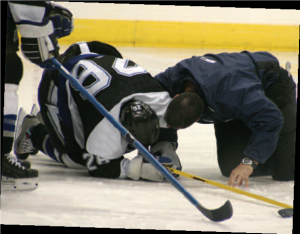 Good News on Concussions If you happen to be a hockey fan, you know that NHL superstar Sidney Crosby nearly lost his entire season to a concussion. What finally helped him get back on the ice was the diagnosis and treatment of a soft-tissue neck injury that accompanied the concussion. This was no surprise to the doctors at the MMTR Health Clinic in Guelph, Ontario, which has been treating hockey concussions for years. They have found that many symptoms attributed to the lingering effects of a concussion actually correspond to specific neck muscles damaged at the time of the original injury. Once treatment is individualized and the muscles repaired, patients experience speedy postconcussive recoveries.
Good News on Concussions If you happen to be a hockey fan, you know that NHL superstar Sidney Crosby nearly lost his entire season to a concussion. What finally helped him get back on the ice was the diagnosis and treatment of a soft-tissue neck injury that accompanied the concussion. This was no surprise to the doctors at the MMTR Health Clinic in Guelph, Ontario, which has been treating hockey concussions for years. They have found that many symptoms attributed to the lingering effects of a concussion actually correspond to specific neck muscles damaged at the time of the original injury. Once treatment is individualized and the muscles repaired, patients experience speedy postconcussive recoveries.
The Skinny on Modeling Role models play a key part in the world of eating disorders, with skinny fashion icons ranking among the major culprits. In Israel, a law passed recently dictates that models appearing in advertising must have  a Body Mass Index (BMI) of 18.5 or more. A media storm ensued, with critics of the law saying the government should aim its efforts on health as opposed to weight. Indeed, some models now disqualified are naturally skinny and completely healthy. Should they be prevented from earning a living without knowing whether they are actually unhealthy in some way? The Israeli government points to statistics that show 1 in 50 teenage girls suffers from an eating disorder, and stands by its position.
a Body Mass Index (BMI) of 18.5 or more. A media storm ensued, with critics of the law saying the government should aim its efforts on health as opposed to weight. Indeed, some models now disqualified are naturally skinny and completely healthy. Should they be prevented from earning a living without knowing whether they are actually unhealthy in some way? The Israeli government points to statistics that show 1 in 50 teenage girls suffers from an eating disorder, and stands by its position.
 Is There an Autism Epidemic? A March study released by the Centers for Disease Control and Prevention estimates that 1 in 88 children born in the U.S. suffers from a disorder on the autism spectrum. The last study estimated the ratio to be 1 in 110 and one done in 2002 suggests that the number of autistic children has doubled since then to around one million. Does this mean there is an “epidemic” of autism? Most doctors and researchers believe this is not the case. Instead, the numbers reflect better diagnostic screening tools and earlier detection. There is no “test” for autism, such as a blood test; it is detected through observing behavior of children typically around the age of eight. “One thing the data tells us with certainty,” says CDC Director Dr. Thomas Frieden, “is there are many children and families who need help.”
Is There an Autism Epidemic? A March study released by the Centers for Disease Control and Prevention estimates that 1 in 88 children born in the U.S. suffers from a disorder on the autism spectrum. The last study estimated the ratio to be 1 in 110 and one done in 2002 suggests that the number of autistic children has doubled since then to around one million. Does this mean there is an “epidemic” of autism? Most doctors and researchers believe this is not the case. Instead, the numbers reflect better diagnostic screening tools and earlier detection. There is no “test” for autism, such as a blood test; it is detected through observing behavior of children typically around the age of eight. “One thing the data tells us with certainty,” says CDC Director Dr. Thomas Frieden, “is there are many children and families who need help.”



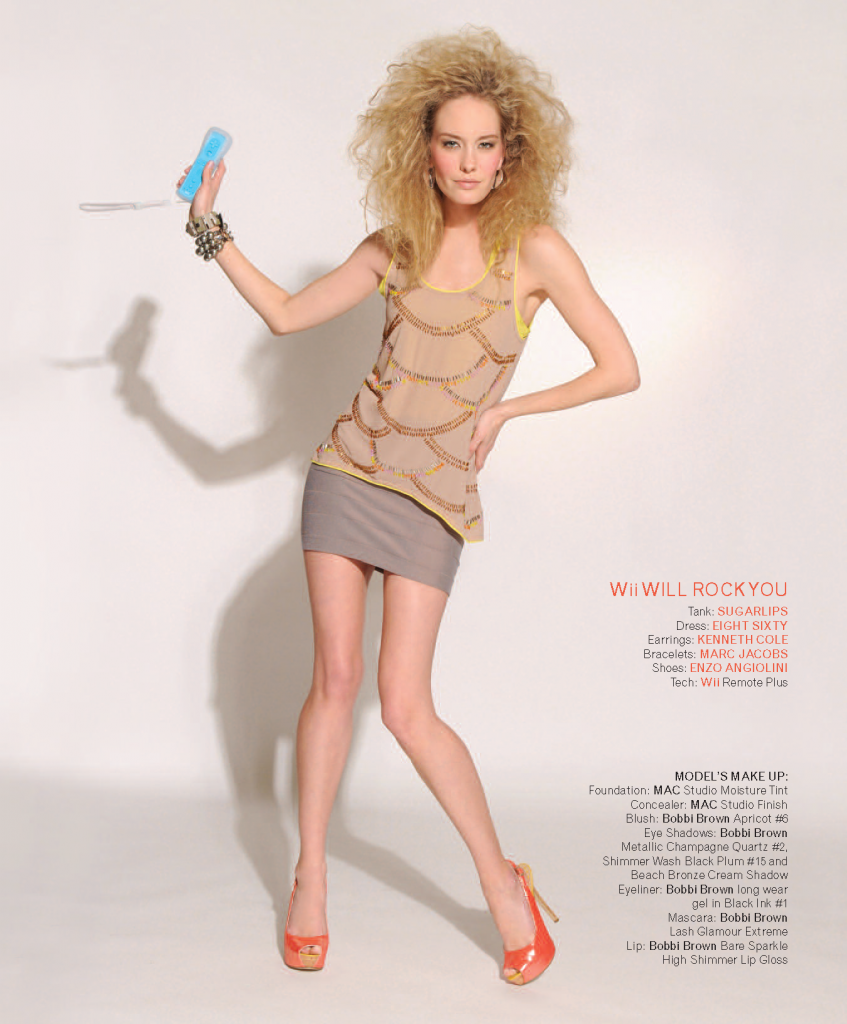
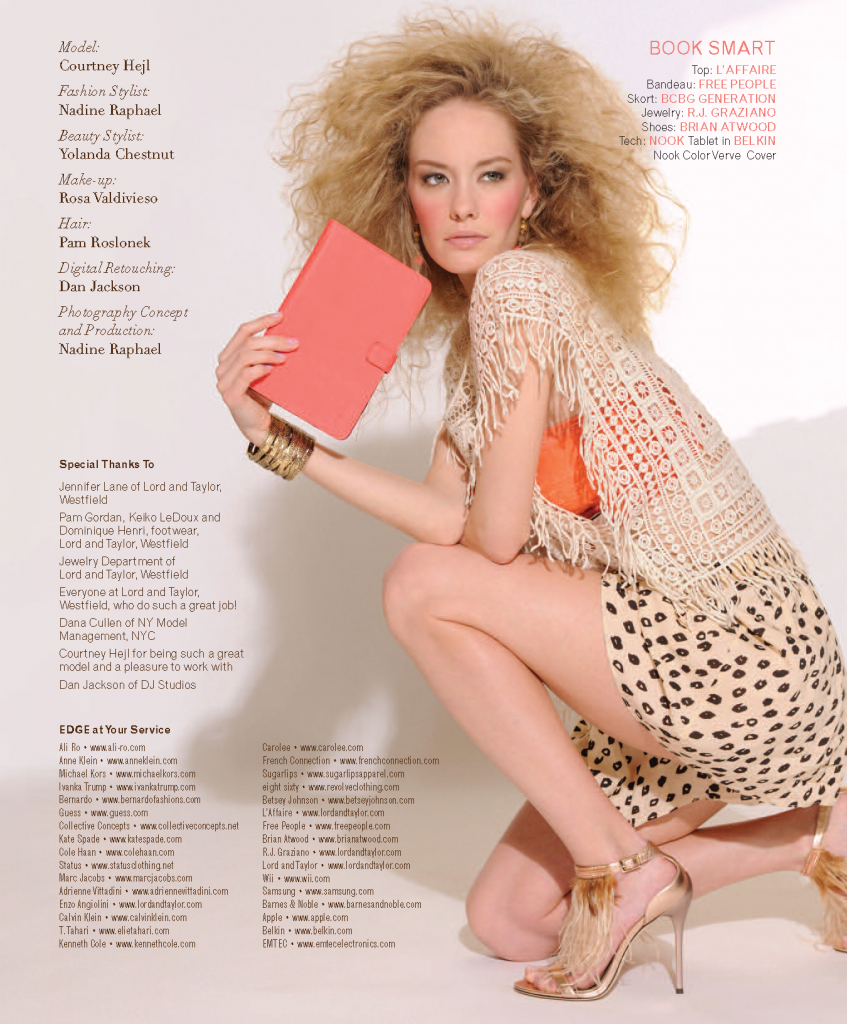
…there’s not necessarily a way when it comes to estate planning for pets.
 Trouble, they say, comes in all shapes and sizes. When Leona Helmsley passed away, Trouble came with a $12 million price tag. That was what Helmsley bequeathed to Trouble, her cherished Maltese. Leona’s grandchildren convinced a judge to slash that figure to $2 million, but Trouble still managed to live out his dog days in the lap of luxury at that bargain-basement price. Nothing, it seems, ruffles the feathers of one’s heirs quite like money diverted to pet care. The amount of media play the Helmsley case received only underscored this point. Not surprisingly, the result was a surge in pet estate planning. New Jersey attorney Rachel Hirschfeld happens to be an authority on the subject. She was one of the first attorneys in the country to focus on what is now known as Animal Law. “I have done contracts for dogs, cats, birds, iguanas, snakes, ferrets and other exotic pets, and I have done contracts for whole African Safaris and Cat Colonies,” she says.
Trouble, they say, comes in all shapes and sizes. When Leona Helmsley passed away, Trouble came with a $12 million price tag. That was what Helmsley bequeathed to Trouble, her cherished Maltese. Leona’s grandchildren convinced a judge to slash that figure to $2 million, but Trouble still managed to live out his dog days in the lap of luxury at that bargain-basement price. Nothing, it seems, ruffles the feathers of one’s heirs quite like money diverted to pet care. The amount of media play the Helmsley case received only underscored this point. Not surprisingly, the result was a surge in pet estate planning. New Jersey attorney Rachel Hirschfeld happens to be an authority on the subject. She was one of the first attorneys in the country to focus on what is now known as Animal Law. “I have done contracts for dogs, cats, birds, iguanas, snakes, ferrets and other exotic pets, and I have done contracts for whole African Safaris and Cat Colonies,” she says.
Hirschfeld even does estate contracts for horses, though she says these can get tricky due to their expensive care and their space problems. Hirschfeld moved the focus of her estate-planning practice in the direction of pet trusts and pet protection agreements about seven years ago, and now offers both counseling and document preparation to help pet owners protect their four-legged loved ones. She writes up some 200 agreements and trusts a month. Hirschfeld has appeared on numerous television programs, including ABC Nightline and The Today Show. She is also regularly quoted in media outlets ranging from The Wall Street Journal to Fox News to The New Yorker. Hirschfeld’s book (Petriarch: The Complete Guide to Financial and Legal Planning for Pet’s Continued Care) was published in April 2010 and sales remain robust two years later.
Donald Trump called it a “terrific guide.” Hirschfeld’s mission is to ensure that every pet finds a loving home and is guaranteed a secure future. That commitment began around the time she lost her beloved dog, Soupbone, in 2005. A decade earlier, she had saved the two-year-old mixed-breed from being euthanized. “He changed me,” a wistful Hirschfeld recalls. “He was funny and so smart. We talked to each other and he never left my side. He was just so human.” While mourning Soupbone’s demise, Hirschfeld began wondering what might have happened had the tables been turned? Who would take care of her pets if she were no longer around? This dilemma led her to what she describes as her most important life’s work.
She has created the Pet Protection Agreement and the Hirschfeld Trust, both legally binding protection contracts for a pet’s continued care. Although some attorneys think that including provisions or directions in a will for a pet’s care will suffice, Hirschfeld stresses that intentions in a will do not have to be followed, and can be negated by probate of a court. In fact, she advises that more than one guardian be named in a trust to prevent misappropriation of funds or other abuses. “By naming several guardians, a close eye can be kept on how directed monies are spent,” she says, adding that a pet protection agreement or a pet trust is the “ultimate love letter to beloved pets.” The difficult part of the process for pet owners is the emotional one. “Most clients worry that whoever they appoint as guardian won’t love their pet the same way they do,” she explains. “I had one woman who wanted to name her husband as guardian to her much-loved pet, but he refused. The distraught woman soon found a horde of people willing to take on the responsibility, including her close circle of girlfriends, the owner of the corner store she frequented, and her doorman. Her husband oversaw the funds, and the care was in the hands of a whole community of people who loved both the woman and her pet.” A mother of three and grandmother to five, Hirschfeld adds that she loves people, but all animals hold a special place in heart. With a dog at her feet, another at her side, and a cat curled up nearby (all are rescues) she speaks about her work with great conviction and fervor. “I aim to make every animal’s life better,” she says.
Editor’s Note: Rachel Hirschfeld is pictured above with Swizzle and Adam, both rescue dogs. She has been working with Asbury Park Mayor Ed Johnson and Councilwoman Sue Henderson to create a year-round area where dogs (and their owners) can socialize. The Pet Protection Agreement, once the province of the rich and famous, is now affordable and can be completed online—without a lawyer—for as little as $39. A Pet Trust Agreement is a bit more involved, and like all trusts, requires funds. To get your paws on more information, log on to pettrustlawyer.com.
Jim Dratfield will do anything to get his shot.
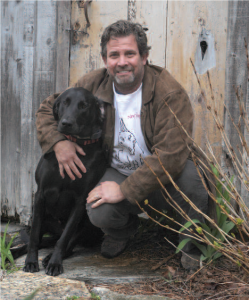
Jim Dratfield and Sawyer
Jim Dratfield has been known to sing an aria to an Italian Greyhound, rub shoulders with a cheetah and transform a bathroom sink into a photofriendly backdrop for a finicky house cat. “I’ll do whatever it takes to get an animal to respond,” says Dratfield from his farmhouse in upstate New York. “I don’t expect animals to be models.” Improvisation comes easily to this former actor who has been called the Dr. Doolittle of animal photographers. His theatrical career hit a prophetic note in 1980, when he was cast as an aspiring photographer in a Broadway revival of The Man Who Came to Dinner. Born and raised in a pet friendly household in Princeton, Dratfield spent his childhood performing and mingling with aspiring filmmakers, many of whom were protégés of his dad, Leo, a legendary film distributor. Anxious to advance his acting career, young Dratfield landed a recurring role as a paramedic on TV’s St. Elsewhere, but reality set in as he approached his thirties. “The life of an actor is a funny thing,” Dratfield says. “It’s one thing to struggle as an actor in your twenties, but when you’re in your early thirties, it becomes more of a concern. I was fortunate to have done a Broadway show and some television work, but there’s something called waiting tables—I ended up doing a lot of that.”
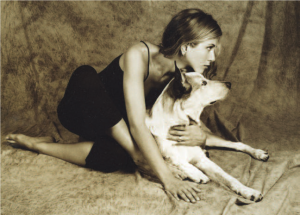
Jennifer Aniston and friend
The turning point came when he shot some promotional photos with his dog, Kuma, opening the door to a lucrative new career. “A light bulb went off,” he says. “I’d always loved animals and photography and began wondering if there was a market for fine art pet photography. I thought it might be a way to help support my acting habit.” Dratfield exhibited some of his photos in the restaurant where he waited tables and caught the eye of a literary agent. “She liked the pictures on the walls and was a dog lover, so we started talking,” Dratfield recalls. The Quotable Canine, a coffee table book pairing dog portraits by Dratfield and Paul Coughlin with classic quotes, was published by Doubleday shortly thereafter. In 1993, Dratfield’s passion for animals and photography coalesced into Petography, Inc. He grew the business via private client commissions, more best-selling books, a prestigious gallery exhibit and evergreen posters, calendars and greeting cards.
It didn’t take long before he became the go-to guy for pet lovers in the entertainment industry, politics and sports world. “I think it launched me because it was such a specific niche and so different from what was out there at the time,” he says. “What do you get the person who has everything and is a pet lover? A photo session!” Dratfield’s private clients and book projects keep him hopping across continents, from the elegantly manicured enclaves of Beverly Hills to the volcanic terrain of Iceland and the wetlands of Yeehaw Junction, Florida. A client flew him down to Yeehaw Junction, aka Jackass Junction, to photograph a prized hunting dog. “It was like something out of Deliverance,” he recalls. “The ranch manager, Peanut Pitt, couldn’t meet me because he was taking his daughter deer hunting for her 14th birthday; so his wife, Spanky, met me at the gate. I called my wife and said, ‘If I don’t come back alive…’” Although he’s suffered his share of bites, scratches and knock-downs from his four-or-more-legged subjects, Dratfield finds pet owners to be challenging as well. “There was the therapist who was French kissing her dog in bed and wanted pictures of that,” he says. And a pair of renowned folk art collectors suggested posing their dogs drinking out of a toy toilet. “The craziest shoot I ever did was for a woman who had two cheetahs,” recalls Dratfield. “I went into this gated area with her and the cheetahs, and was a little nervous. One rubbed up against me, but I got the images.
Three weeks later, the woman was mauled by those cheetahs. I’m lucky I survived. I got them on a good day.” Dratfield’s celebrity gigs have taken him to Henry Kissinger’s backyard, where the shirtless statesman fussed and cooed over his black Lab while his wife, Nancy, and mother stood by. And there were jaunts to London to photograph British Labour Party Leader Baron Roy Hattersley’s Bull Terrier and to Jupiter, Florida, to shoot the St. Louis Cardinals with their dogs during spring training. While the furry companions of such mega-celebrities as Jennifer Aniston, Elton John, Kathy Bates, Charlize Theron, Jack Hanna and Oscar de la Renta can be found on Dratfield’s résumé, he is equally proud of his painstaking work on The Quotable Equine. For this exquisite book, published by Clarkson Potter in 2003, he insisted on travelling across Europe and Asia to photograph horses in their distinctive habitats. “With horses, it’s hard to get their personality the way you can with a dog or a cat,” observes Dratfield. “I thought the only way I was going to succeed was to take a cultural element and incorporate that into the imagery.” Whether he’s zooming in on a quizzical pug or a doleful dachshund, an ant farm, turtle or elephant, Dratfield believes that one constant fuels all of his photo shoots: the profound bond between pets and their owners. “You get unconditional love from pets that you don’t get anywhere else,” he says. “If a person is normally uncomfortable in front of a camera, when they’re holding their pet, they’re less self-conscious and more apt to give you something spontaneous because they’re expressing their love.” “I’ve done shoots for the biggest CEO; but when he’s out of the board room and around his little kitten, he’s making kitty noises and talking gibberish. People let down their guard with me. I ultimately see their best sides because they love their pets.”
Dratfield has no regrets about giving up acting for Petography, Inc. because he’s continually reminded that his life’s work makes a difference. “I get calls when a client’s animal passes away. They’ll say, ‘Your pictures meant a lot to me at the time, but now they’ll immortalize my pet in a way that I didn’t even realize.’ That makes me feel good because I’m not doing brain surgery, but I know I’m doing something that gives people contentment.” 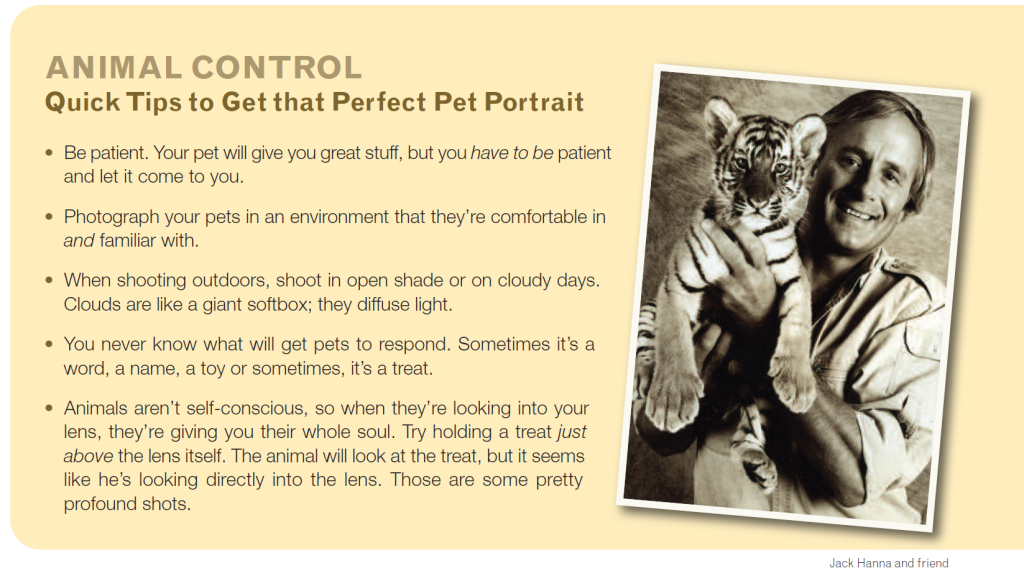
Editor’s Note: You can see more of Jim’s photos by logging on to petography.com. Judith Trojan has written and edited more than 1,000 film and television reviews and celebrity profiles for books, magazines and newsletters. Her interviews have run the gamut from best-selling authors Mary Higgins Clark, Ann Rule and Frank McCourt to cultural touchstones Ken Burns, Carroll O’Connor, Judy Collins and Caroll Spinney (aka Big Bird). Make sure to check out Judith’s FrontRowCenter blog at judithtrojan.com.
Down the Rabbit Hole
Where is video gaming taking our kids?
Remember the good old days, when homes actually had dens and family rooms? These physical spaces still exist, of course, but thanks to quantum leaps in computing power—and profound shifts in what constitutes social interaction— they have become more and more “virtual.” What we used to call dens we now refer to as home offices. That makes sense, at least. But what of the family room, that once-sacred place where Scrabble and Trivial Pursuit provided the glue for togetherness? In the blink of a generation, it has become the rabbit hole down which ’tweens, teens, twenty-somethings and—in startling numbers—grown-ups disappear for hours on end to play video games. The gaming phenomenon has become a subject of growing interest and concern among educators, employers, psychologists and parents. It has created obstacles and opportunities that didn’t exist a couple of decades ago, and has changed the very definition of what we think of as play.
 A LITTLE HISTORY Gaming wasn’t much of an issue when it began in the 1970s. In fact, the word gaming itself did not yet exist. Pong and Space Invaders could be found in arcades and bars, fascinating the quarter-pushers, but the appeal proved limited. However, a new culture had been born. Indeed, 10 years later, Nintendo consoles were everywhere, and games like Donkey Kong, Super Mario Bros., Zelda, and Metroid had parents enforcing strict bedtimes for their prepubescent offspring. The video game industry continued to grow, technologically and financially, as it entered the 21st century. With the doubling of computer power every few years, games had become more complex, more sophisticated and more addictive. And the money being spent on video games by the public was absolutely staggering. Grand Theft Auto IV was released in 2008 and sold six million units, grossing $500 million, in its first week of release. Game developers, now working with squads of brilliant artists, writers, and coders, had tapped into a demand that would have been unimaginable just a few years earlier. Games were modified to be playable not only on hot-selling consoles like Xbox and PlayStation, but on home computers, laptops, tablets and, inevitably, smartphones. With these remarkable advances came a backlash. The assaults came from many quarters—gaming was blamed for teen violence, plummeting verbal abilities, rampaging obesity, and plagues of ADHD, autism and pathological solipsism. College grads, who “should have been” out looking for jobs and spouses, were locking themselves in their darkened rooms with enormous supplies of tortilla chips and diet soda, playing everything from the latest John Madden NFL (total sales for the series estimated at $3 billion) to Guitar Hero, Tiger Woods Golf or Call of Duty.
A LITTLE HISTORY Gaming wasn’t much of an issue when it began in the 1970s. In fact, the word gaming itself did not yet exist. Pong and Space Invaders could be found in arcades and bars, fascinating the quarter-pushers, but the appeal proved limited. However, a new culture had been born. Indeed, 10 years later, Nintendo consoles were everywhere, and games like Donkey Kong, Super Mario Bros., Zelda, and Metroid had parents enforcing strict bedtimes for their prepubescent offspring. The video game industry continued to grow, technologically and financially, as it entered the 21st century. With the doubling of computer power every few years, games had become more complex, more sophisticated and more addictive. And the money being spent on video games by the public was absolutely staggering. Grand Theft Auto IV was released in 2008 and sold six million units, grossing $500 million, in its first week of release. Game developers, now working with squads of brilliant artists, writers, and coders, had tapped into a demand that would have been unimaginable just a few years earlier. Games were modified to be playable not only on hot-selling consoles like Xbox and PlayStation, but on home computers, laptops, tablets and, inevitably, smartphones. With these remarkable advances came a backlash. The assaults came from many quarters—gaming was blamed for teen violence, plummeting verbal abilities, rampaging obesity, and plagues of ADHD, autism and pathological solipsism. College grads, who “should have been” out looking for jobs and spouses, were locking themselves in their darkened rooms with enormous supplies of tortilla chips and diet soda, playing everything from the latest John Madden NFL (total sales for the series estimated at $3 billion) to Guitar Hero, Tiger Woods Golf or Call of Duty.

Photo credit: iStockphoto/Thinkstock
WHO’S GETTING HURT? There is widespread agreement that some video games— specifically those emphasizing stealth, violence, misogyny and lawlessness—are unlikely to be positive forces. This is particularly true in the case of pre-teen and adolescent youth, as well as in adolescent males, who tend to lock into these ninja paradigms. Many games enable the player to experience adventure and danger without developing a realistic appreciation of the consequences. Experts are quick to point out real issues even with the seemingly innocuous games that allow kids to experience the mastery of a sport or activity without acquiring the patience and persistence to study and practice. For example, while a child can quickly gain some mastery over any of these games, by contrast an elementary grasp of karate or baseball requires years of constant practice and respect for authority. The boredom and physical discomfort of actually engaging in a sport pay dividends that sitting alone pushing buttons never will. But don’t try telling that to a child who is slugging the ball 500 feet over Yankee Stadium’s virtual fence. Some people go so far as to claim there is a one-to-one relationship between gaming and illegal/antisocial/self-destructive activities. That probably stretches the point a bit too far. If memory serves, teenage boys are not exactly hard-wired to be risk-averse. The better debate is whether certain kids are genetically programmed to be sociopaths. Every time another school shooting occurs, video games are high on the list of proximate causes—right after drug abuse, parental abuse, and getting ditched by the prom queen. This leads to analyses that defy the basic rules of scientific research: clearly defined parameters, repeatable results, and objective evaluations. As yet, no one has produced a shred of evidence that video games turn troubled boys into monsters.
PARENTAL PERSPECTIVE That being said, a search through the archives of the American Psychological Association web site doesn’t leave a worried parent with many clear answers. For every pro there seems to be a con, and vice-versa. Video gaming may indeed encourage violent behavior in some (possibly predisposed) kids. Sexual stereotyping and objectification also broadens the gender gap. Then again, gaming helps develop better hand-to-eye coordination, faster reflexes and better processing skills. Games may even help to treat dyslexia. The more you read and research, the clearer it becomes that nothing resembling a unified approach to gaming as a potential threat to young people’s development has yet emerged. Nor should anyone expect it to. Concerned parents might be better served by developing some basic tools to encourage moderation in gaming. Because of the popularity of video games, completely eliminating them from a child’s life might be difficult. But according to the non-profit Palo Alto Medical Foundation, you can decrease the negative impact that they have by… • Knowing the rating of the video games your children play • Not installing video game equipment in your children’s bedroom • Setting limits on how often and how long your children are allowed to play video games • Monitoring all of your children’s media consumption, including television, movies and the Internet • Supervising your children’s Internet use (there are now many video games available for playing online) • Taking the time to discuss with your children the games they are playing or other media they are watching— how they feel about what they observe in these video games, television programs or movies • Sharing with fellow parents information about certain games or ideas for helping each other in parenting Is it an uphill battle? Of course it is. Parenting is an uphill battle. Are game designers targeting young people? Of course they are—but no more than manufacturers of clothing or fast food or beverages or cosmetics. Commercials for prescription drugs and law firms target adults. Welcome to capitalism. The better question might be: Are we doing enough to identify the kind of at-risk young men and women whose behavior is susceptible to the negative influences of some video games?

Photo credit: iStockphoto/Thinkstock
THOUGHTS FROM THE GAMING WORLD Every so often there is a groundswell of interest in regulating the content of video games. As any lawyer will tell you, that gets tricky because the industry will almost certainly put the First Amendment in play. Perhaps it’s not the industry picture that needs to be altered, but the parenting picture. Consider the viewpoint of one young game developer who recently cashed an eight-figure paycheck after selling his company to a major software corporation. His take is that video games have provided many parents with a cheap, popular, absorbing babysitter—one that keeps Junior at home rather than running in the mean streets. “If you don’t think your child should be playing,” he says, “maybe you should buy her a book, or teach him how to do woodworking, or get them aikido lessons. Maybe it’s not the kids who are being irresponsible, but you. There’s nothing inherently evil in gaming, any more than there is in ice cream—it’s not an unqualified evil like tobacco, crystal meth, binge drinking, or unsafe sex. It’s fun, it has positive qualities, it can even be educational. But you need to help your kids develop values and priorities and a sense of balance.” Tens of millions of children have access, by one means or another, to a wide range of video games. Some are despicable, yet others are clearly educational and developmentally sound. Some perspective is called for here. Remember that the overwhelming majority of these children will have their hearts broken, get zits, fail to make the varsity, and wallow in the certainty that their parents neither love nor understand them—all before they reach voting age. Amazingly, they will go on to lead reasonably productive and happy lives.

